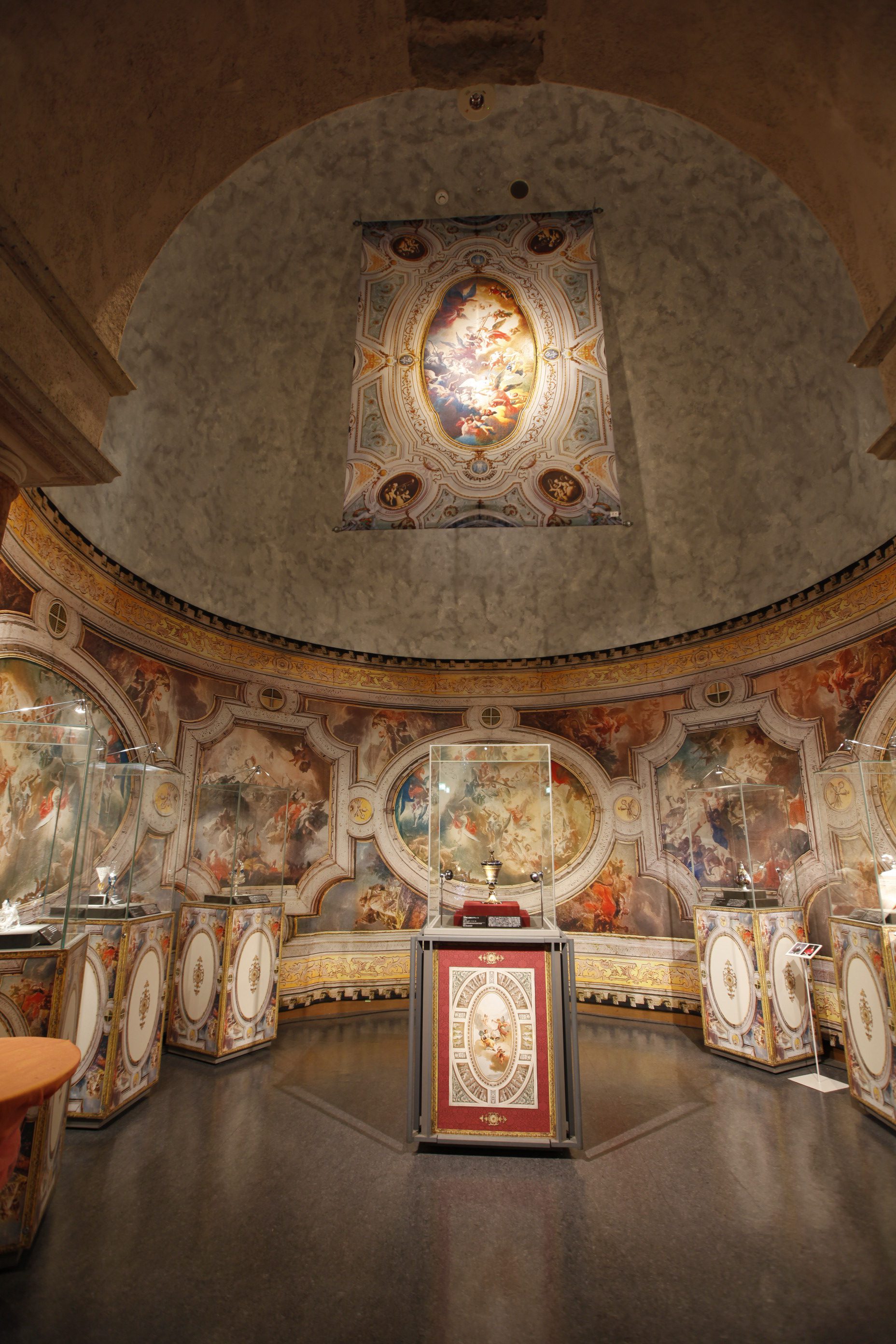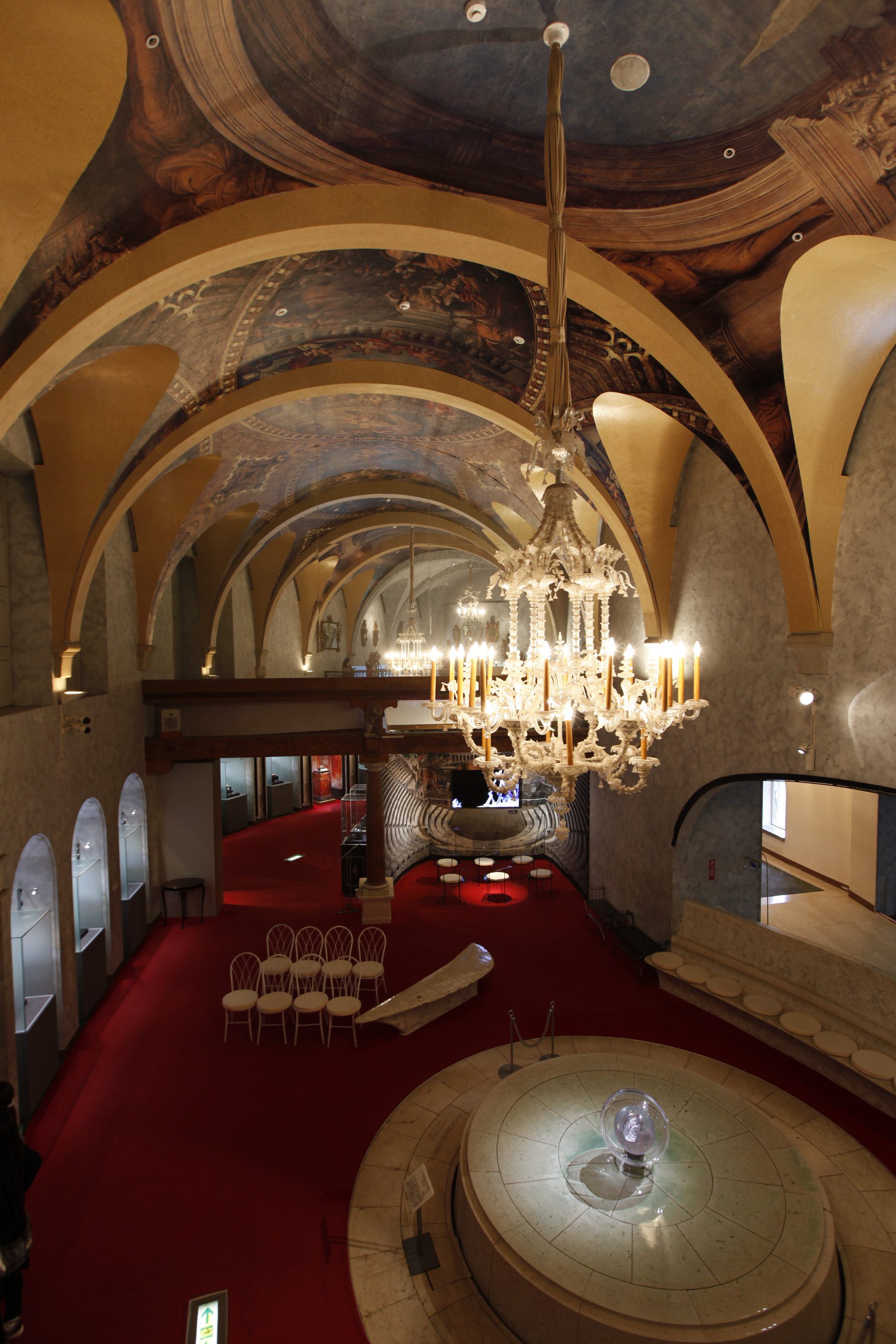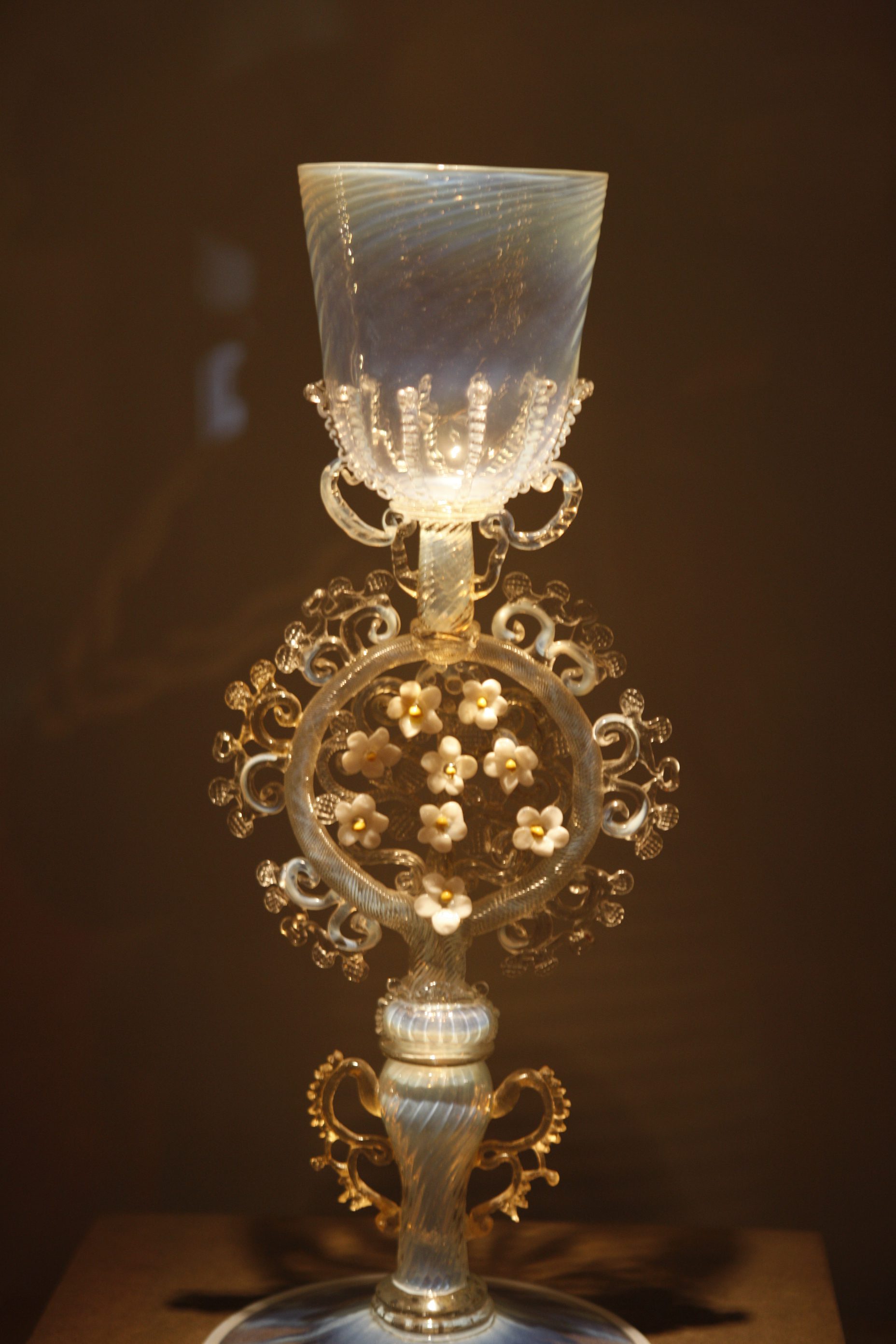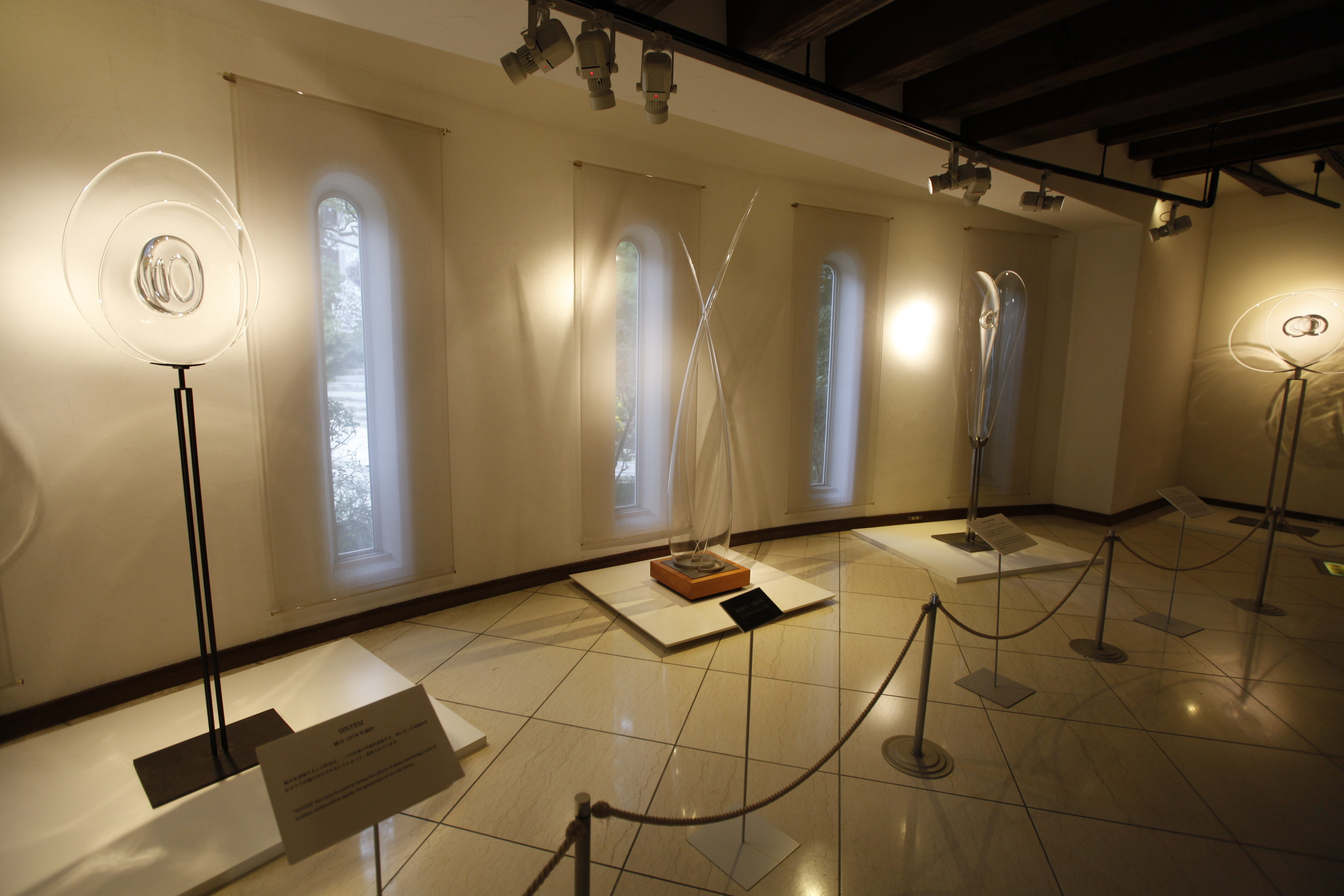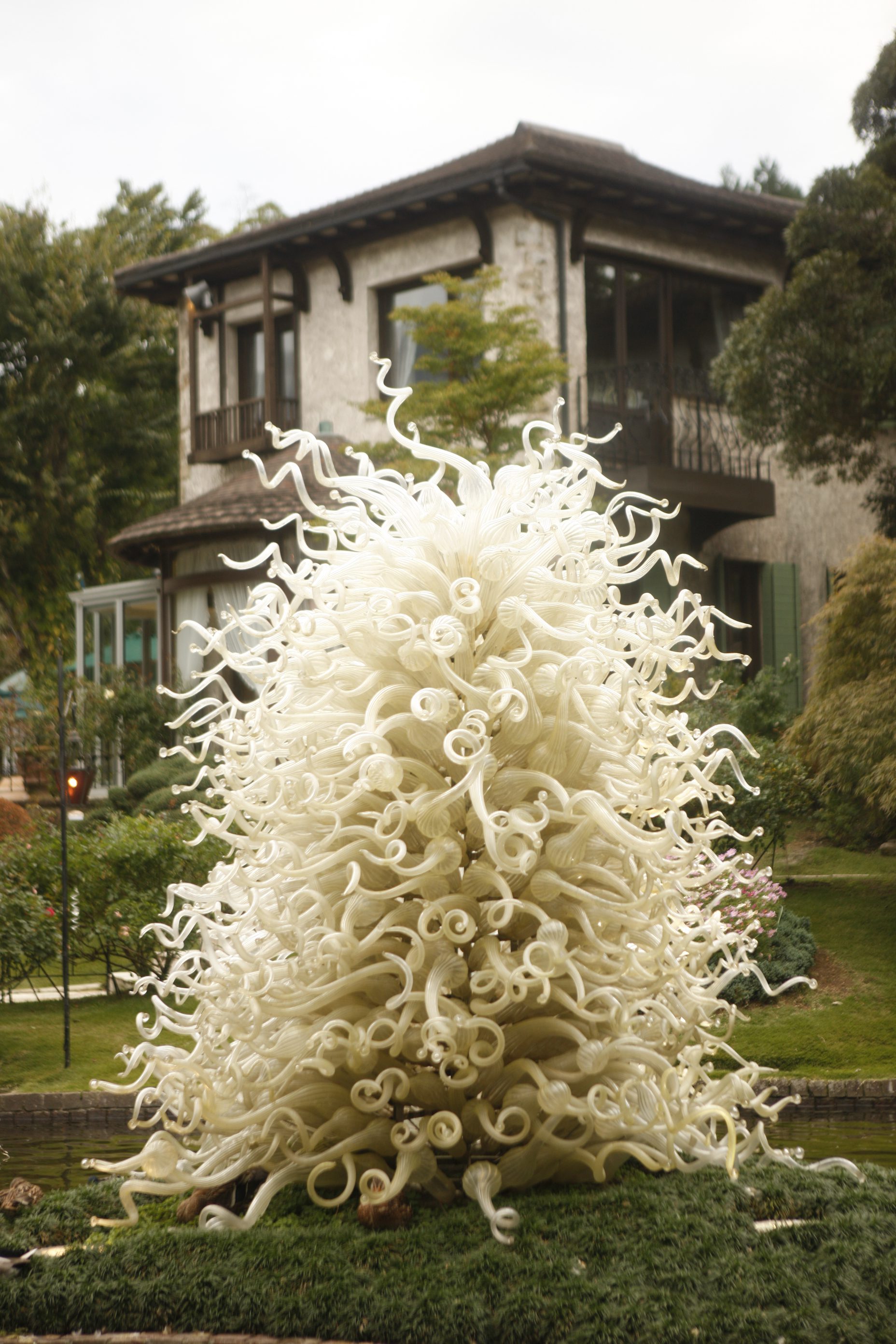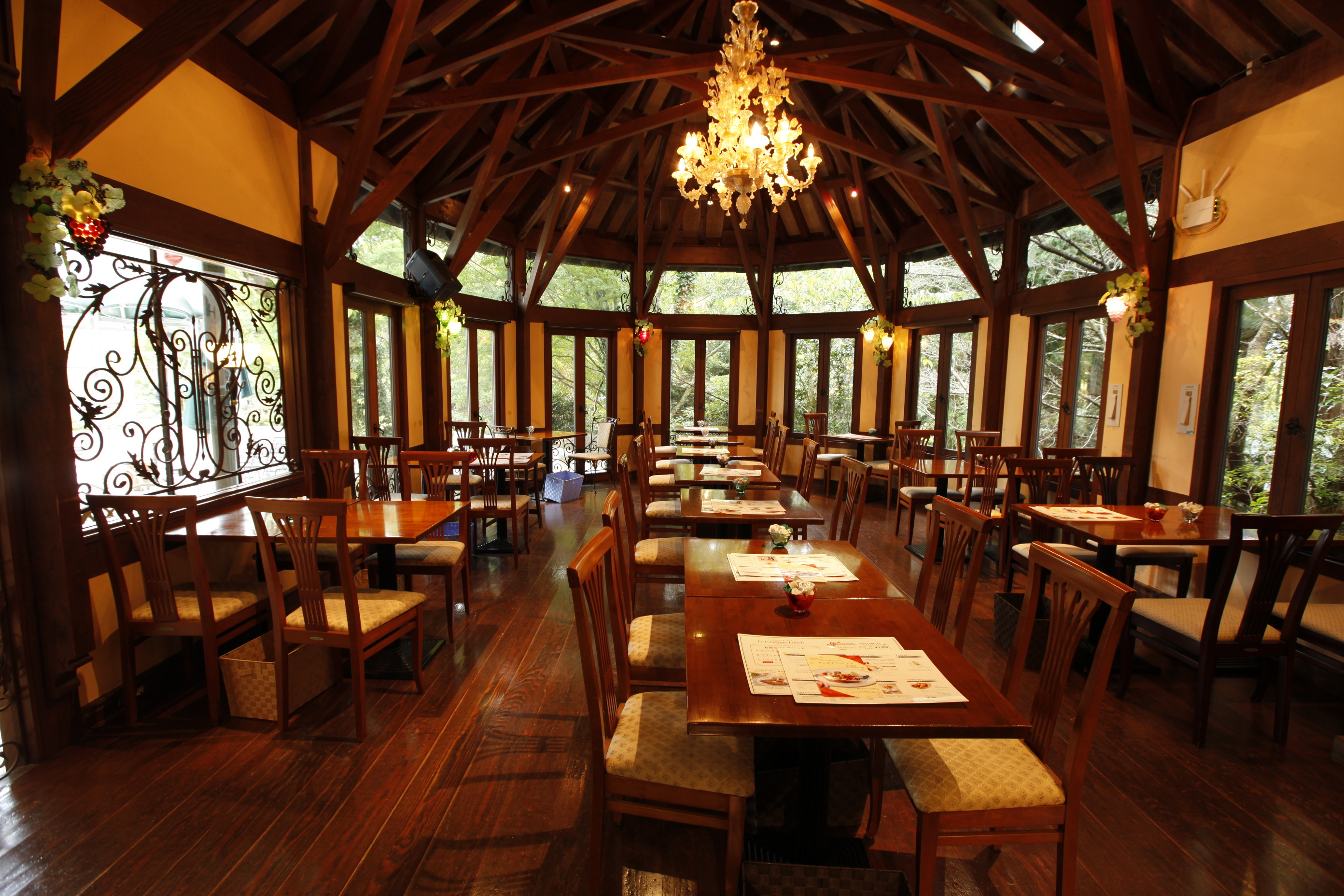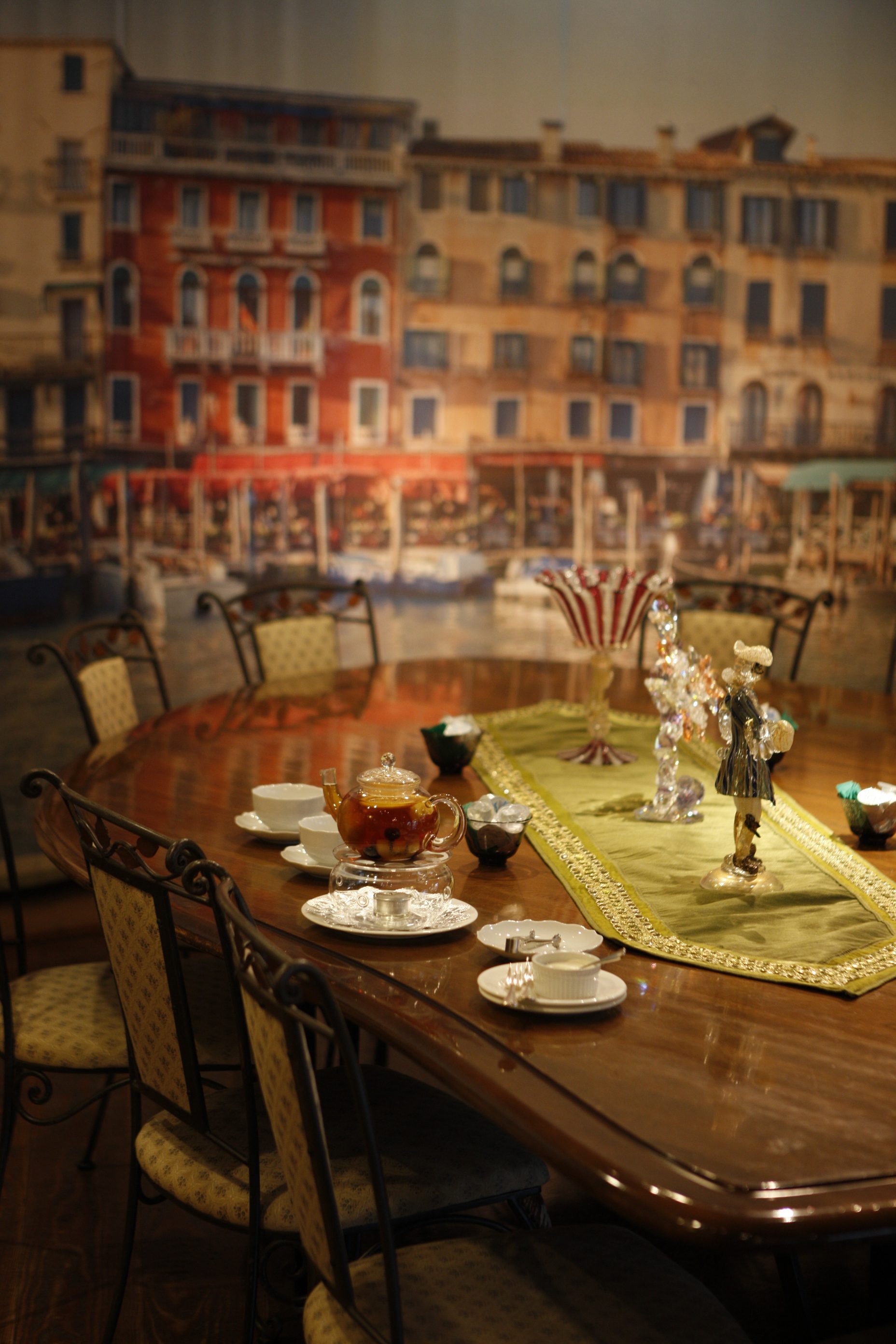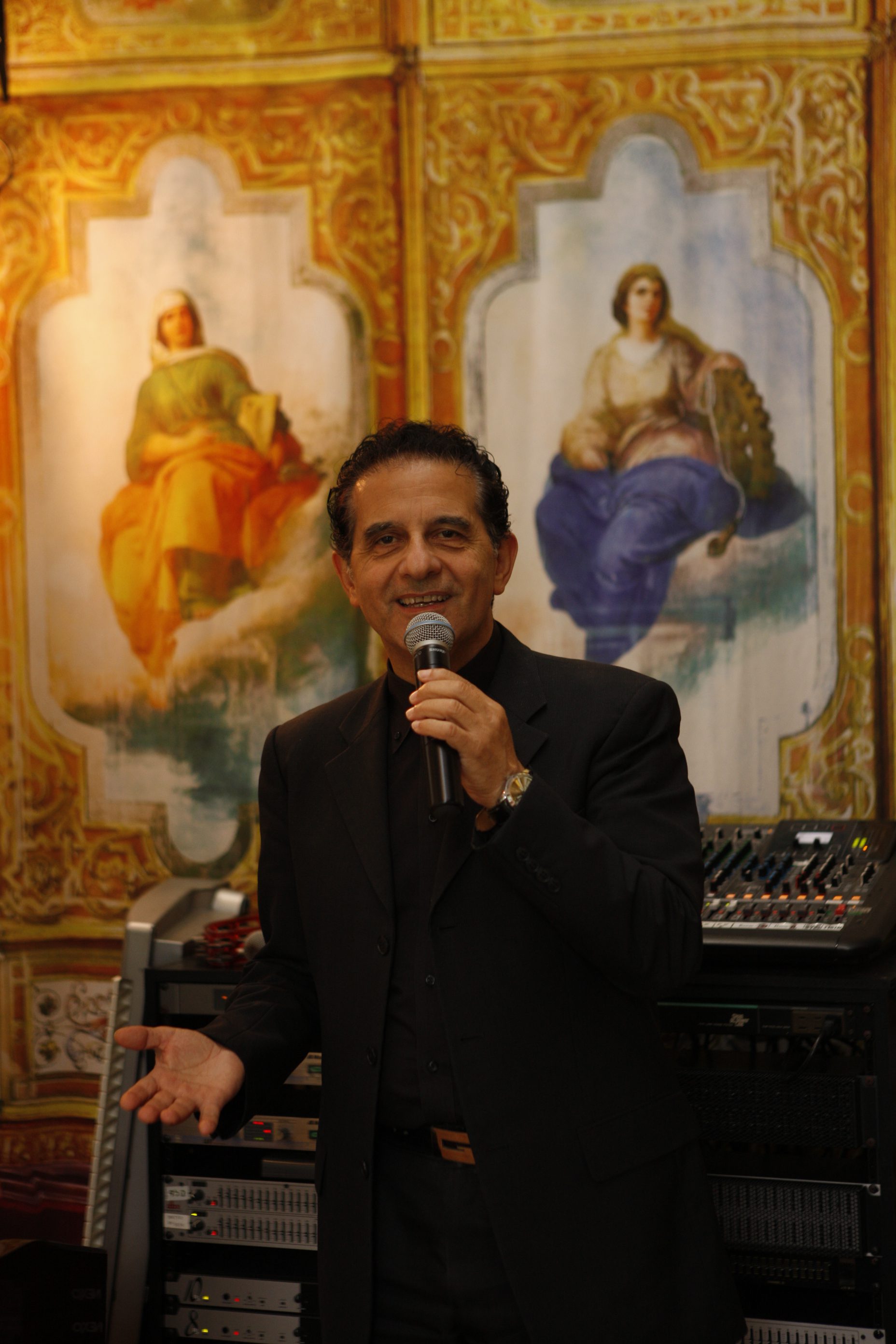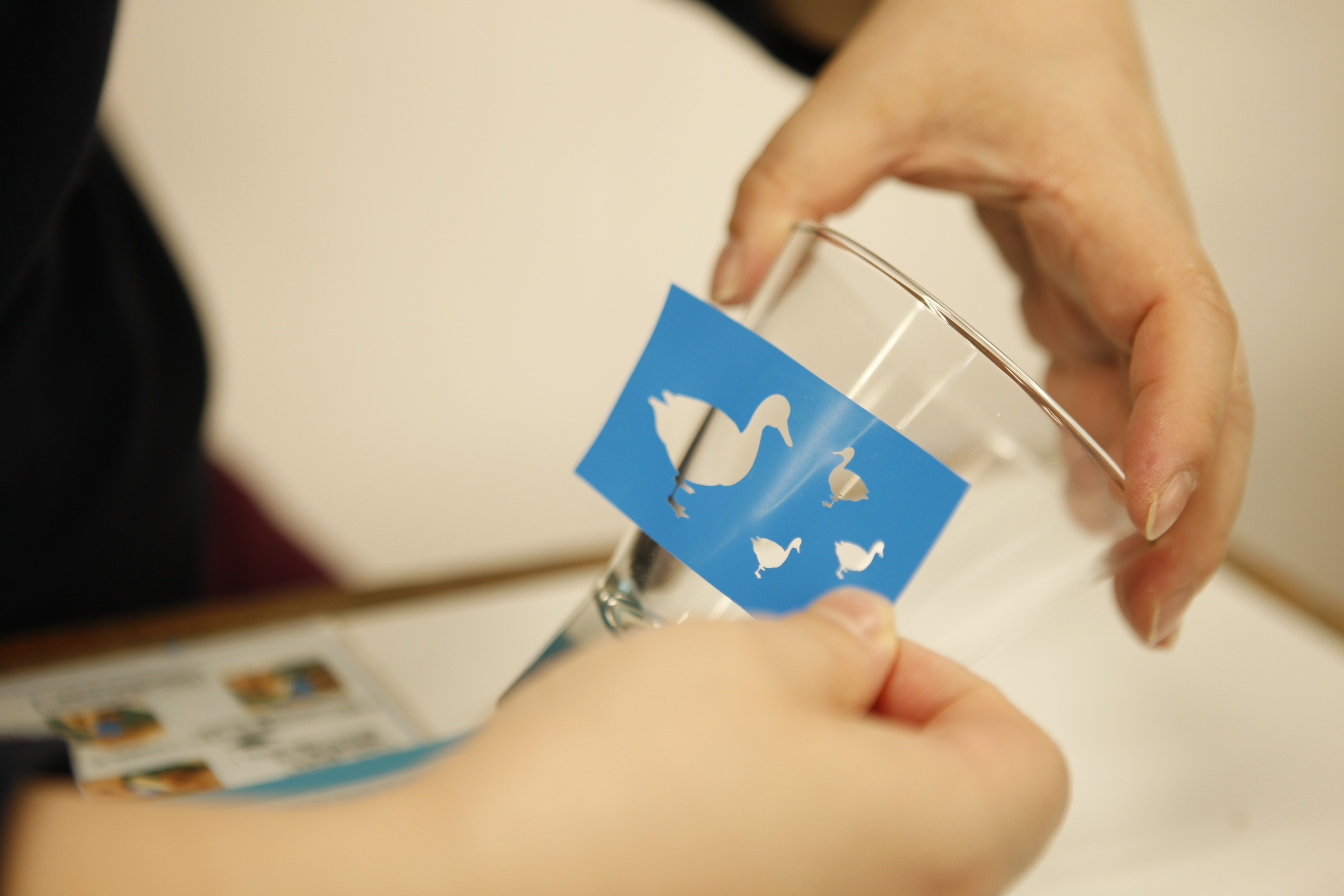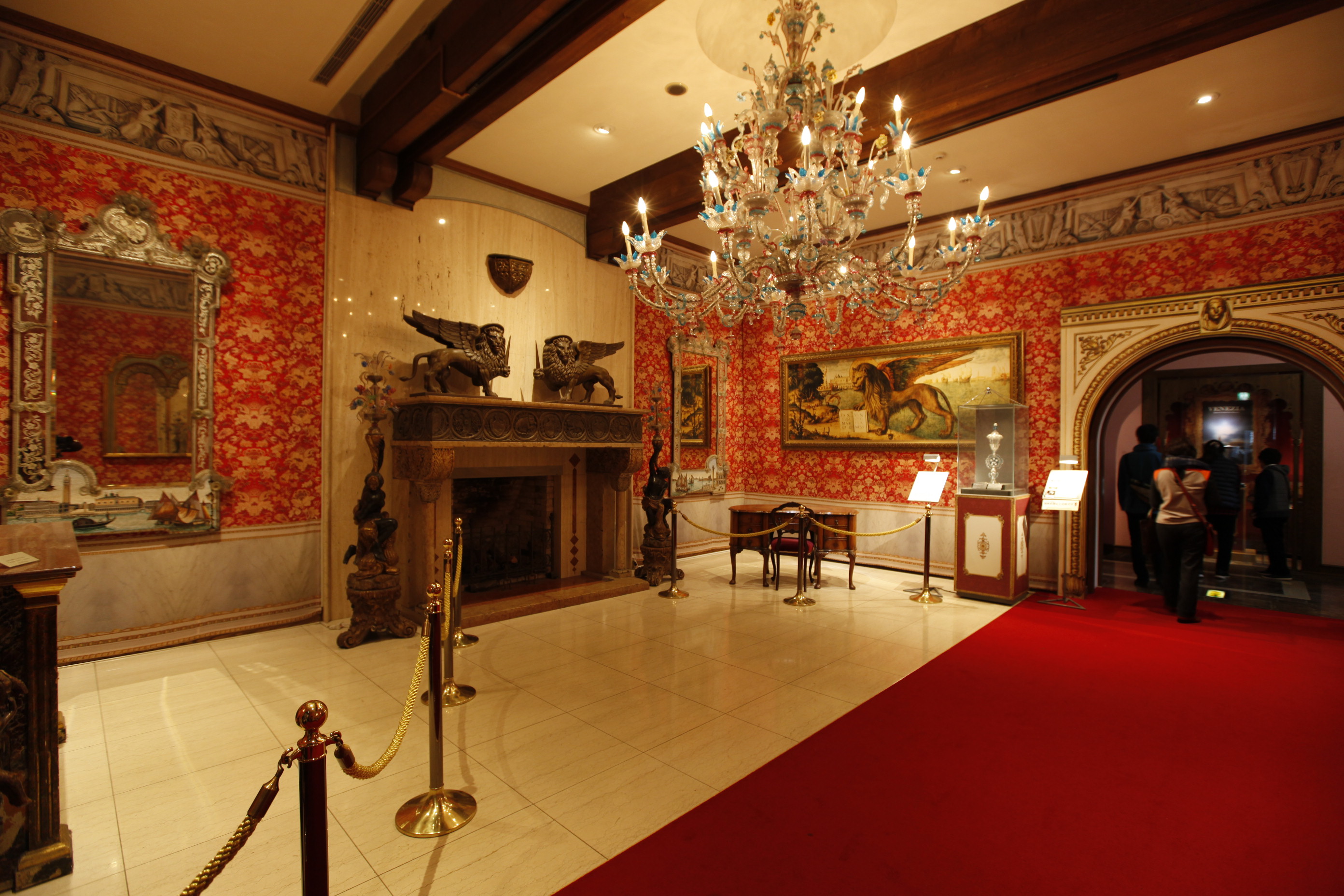 Hakone Garasunomori Museum
Hakone Garasunomori Museum
Hakone Glass no Mori Venetian Glass Museum in Sengokuhara is dedicated to Venetian glass.
It houses a collection of gorgeous Venetian glass spanning rare artworks crafted between the 15th and 18th century, works of contemporary artists, and outdoor art, and also features a shop and restaurant.
What exactly is Venetian glass?
As its name suggests, Venetian glass originated in Venice (known as “the City of Water”), which is situated in the northern part of Italy. Italy has a long history of glassmaking dating back to the ancient Roman empire (first century BC to fifth century AD), when the then-groundbreaking technique of blowing molten glass into desired shapes flourished. Following a period of decline, Venetian glass enjoyed a revival in the Middle Ages, when it was used in church architecture. In 1291, the government of the Republic of Venice adopted a policy to relocate and confine all glassmakers/craftsmen, their assistants, and their families to the island of Murano, making unauthorized departures from the island punishable by death. This ushered in a period of strict management and protection of the local glassmaking industry.
Today, Murano remains a key production center of Venetian glass.
Between the 13th and 17th centuries, a range of new glassmaking techniques and designs were developed, and at its peak, the Venetian glass industry grew to capture roughly 90% of the European market, helped in part by the Italian renaissance boom.
The garden of Hakone Glass no Mori Venetian Glass Museum has on display some 100 Venetian glass artworks that were in vogue among the European aristocracy during this period.
Venetian glassmaking entered another period of decline in the 19th century, coinciding with the industrial revolution and the end of the Venetian republic. However, it has lived on thanks to a boom in museum construction, repairs of old church murals that employed related techniques, and is currently experiencing a modern revival through new initiatives.
The Modern Venetian Glass Museum, one of the two buildings making up Hakone Glass no Mori Venetian Glass Museum, exhibits modern Venetian glass artworks that are part of this resurgence. One artwork that is particularly worthy of note in this category is the “Corridoio,” an outdoor light corridor.
The Corridio consists of a roughly 9m-high and 10m-long arch constructed over a bridge that stretches over a pond. It is made up of roughly 160,000 pieces of crystal glass that reflect the sunlight to create a beautiful corridor. It is said to produce the most beautiful reflections during the fall season due to a combination of the wind direction and the angle at which the sunlight is reflected. When the sun sets on winter days, the corridor produces reflections of the surrounding garden light, creating an entirely different but equally breathtaking display of light.
From the corridor, you can admire the Palazzo Ducale Chandelier situated in the middle of the pond. This is one of two artworks produced as a commemoration for a sister partnership with the Museo del Vetro (Glass Museum) in Murano, Venice, which has the second artwork on display.
Hakone Glass no Mori Venetian Glass Museum adjusts its outdoor art displays by season, exhibiting crystal maiden silvergrass in autumn, and a crystal Christmas tree in winter. The latter, which will be on display from November 1 to December 25, 2017, is a must-see. In 2013, the Christmas tree was ranked number two among the Christmas trees in Japan that you should see at least once in your lifetime.
The tree, which consists of 150,000 pieces of glass, has a stage in front of it, making for an ideal photo spot. From December 22 to 25 (four days), the garden remains open for an additional two hours (beyond its normal closing time of 17:30) to hold the “Christmas Special Night” event, which helps kindle the Christmas atmosphere in Hakone.
Museum shop and workshop stations
Half of the roughly 500,000 annual visitors to Hakone Garasunomori Museum are repeat visitors, suggesting art displays are not its only attraction.
The surprisingly large museum shop that is connected to the Modern Venetian Glass Museum offers products that have been directly imported from Italy at prices below what customers would typically pay in Italy. A large number of visitors to the museum are attracted by the shop, which occasionally holds arts and craft demonstrations, thus providing a fun experience in itself.
In addition, the museum garden features two workshop stations, where you can experience sandblasting, a technique to etch patterns into glass, and fusing, a technique to create accessories from molten glass.
In the sandblasting station, you select a sticker with a pattern you like, affix it to a piece of glass, and etch the pattern into the glass by blasting sand on it using a specialized machine.
This experience takes 30 to 40 minutes and costs ¥1,300, making it accessible to everyone.
In the fusing station, you organize colored glass parts on top of a sheet of glass, melt them, and craft them into accessories such as pendants, key holders, brooches, cufflinks, or other items such as spoons and forks. This experience takes about 20 minutes and results in unique accessories that you can take home. However, because it takes roughly one hour to cool the accessories, it is best to check out this station before visiting the exhibits.
Enjoy a Canzoni concert in the restaurant
The café & restaurant La Canzoni overlooks the outdoor art in the museum garden.
It has an Italian and Venetian theme, with the entrance, wall-mounted lights, and other parts of the interior adorned with Venetian glass. As its name suggests, the café & restaurant hosts Canzoni (Italian ballad) performances by Italian singers (six performances of roughly 15 minutes per day).
You can clap along with these energetic performances by cheerful Italian singers, and have a good time here.
In addition to meals that include beautifully presented vegetables, pasta, risotto, and Milanese cutlet, La Canzoni offers a comprehensive coffee menu. Another popular drink is its delicious fruit tea (¥2,200 for two persons), which infuses the scent and sweetness of fresh seasonal fruits (such as oranges and pineapples) into Nilgiri tea. On sunny days from spring to autumn, seats on the outdoor terrace attract a large number of visitors.
In sum, Hakone Glass no Mori Venetian Glass Museum is not only a venue to appreciate artworks, but it also offers opportunities to take part in a diverse range of experiences.
Address: 940-48 Sengokuhara, Hakone-machi, Ashigarashimo-gun, Kanagawa Prefecture
Tel.: 0460-86-3111
Open: 10:00 – 17:30 (Last entry: 17:00)
Closed: Never (Note: Closed from January 9 to January 19, 2018)
Admission: Adults ¥1,500
Access: 20-minutes ride on the Kanko Shisetsu Meguri Bus (routes S or M) from Gora Station on the Hakone Tozan Line. (Get off at the Garasu-no-Mori-Mae bus stop.)
10-minute drive from Hakone Honbako.
Official homepage: http://www.ciao3.com
